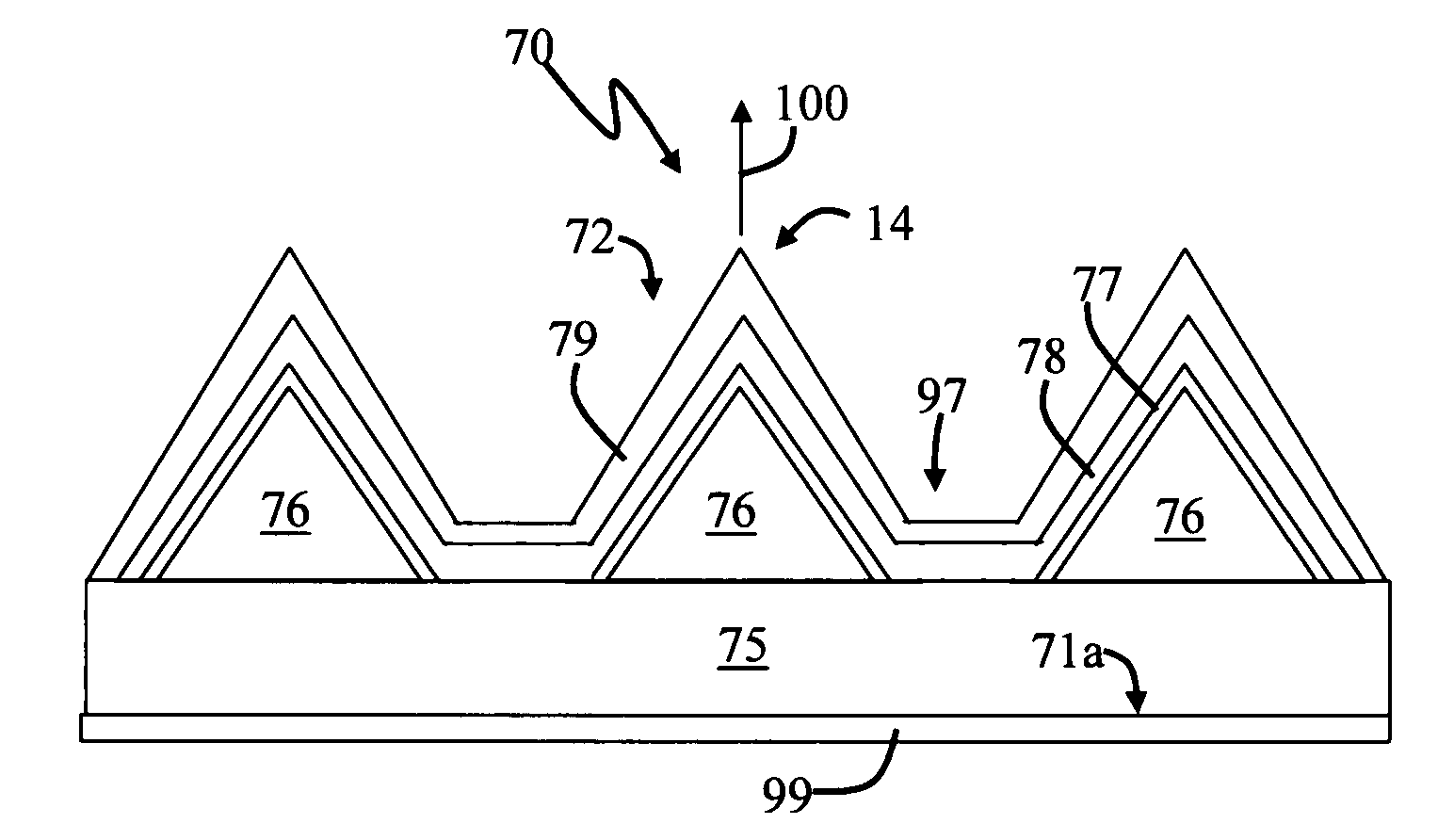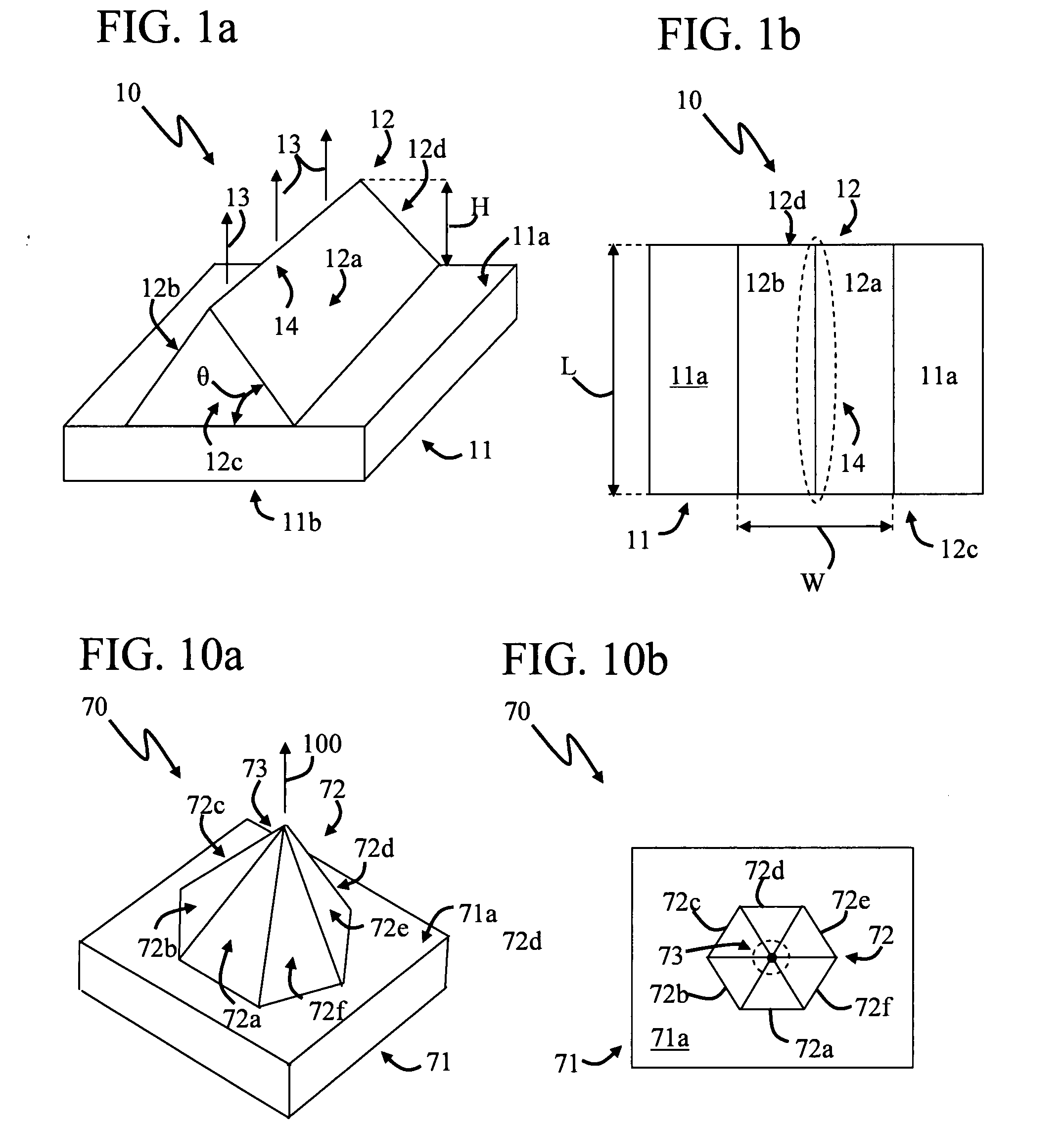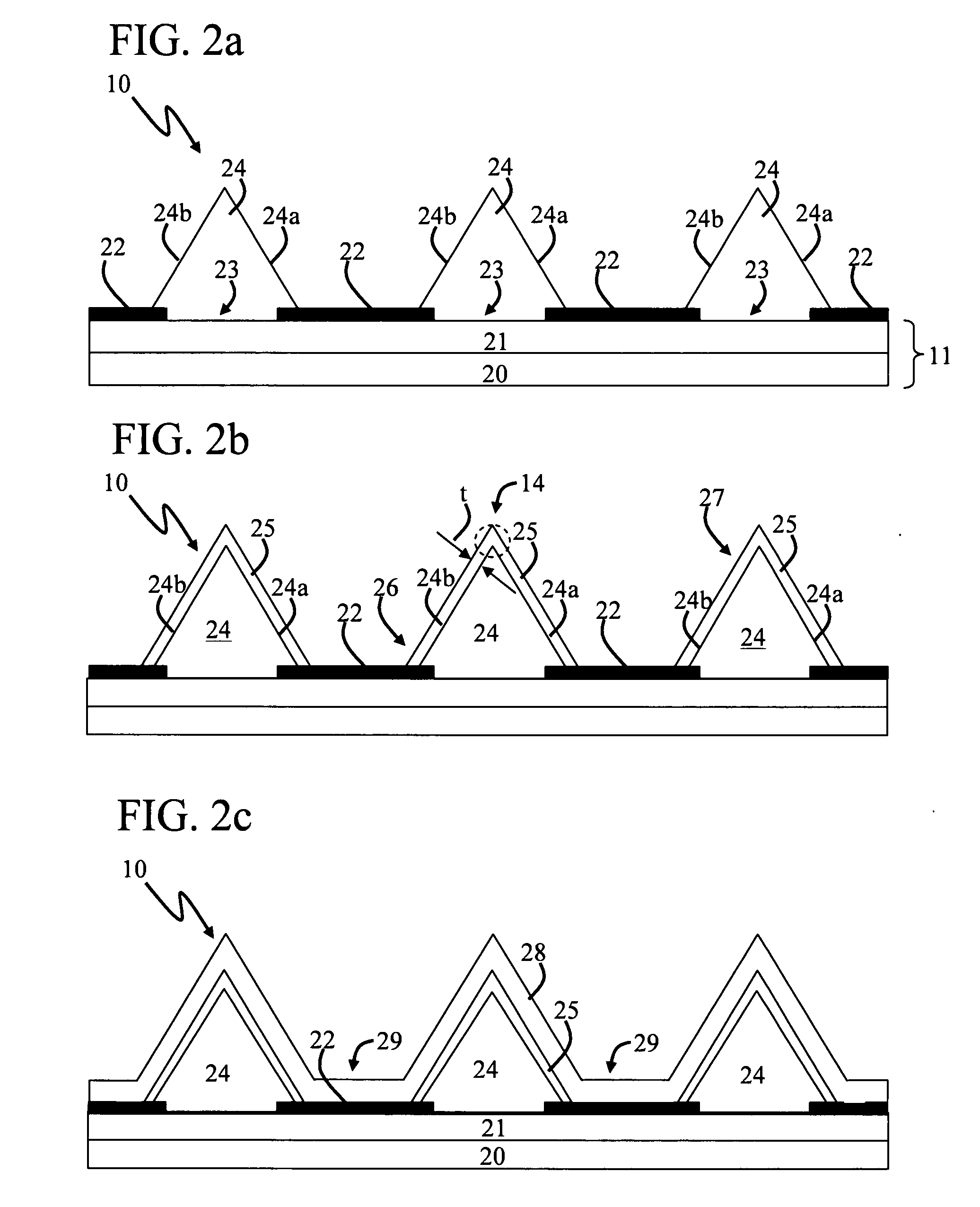Solid State Light Emitting Device
a light-emitting device and solid-state technology, applied in the field of solid-state light-emitting devices and semiconductor devices, can solve the problems of inability to achieve the effect of green and longer wavelength light, weak indium-nitrogen bonding strength, and large amount of indium
- Summary
- Abstract
- Description
- Claims
- Application Information
AI Technical Summary
Benefits of technology
Problems solved by technology
Method used
Image
Examples
Embodiment Construction
[0033]The invention includes several semiconductor structures that can operate as solid state light emitting devices and methods of operating and fabricating them. The semiconductor structures employ InGaN light emitting regions which are shaped so that there is a larger amount of indium in one portion of the light emitting region than others. The portion with the higher amount of indium is typically at or near an apex region of the light emitter. Because a larger amount of indium is incorporated in these regions, light of longer wavelength is emitted therefrom. These wavelengths include those in the green, yellow, and red spectrums, as well as the shades of light therebetween. Other portions of the light emitting region include less indium so they emit shorter wavelengths of light, such as those in the blue and violet spectrums, as well as the shades of light therebetween.
[0034]In some embodiments, the semiconductor structure can emit one or more wavelengths of light separately and...
PUM
 Login to View More
Login to View More Abstract
Description
Claims
Application Information
 Login to View More
Login to View More - R&D
- Intellectual Property
- Life Sciences
- Materials
- Tech Scout
- Unparalleled Data Quality
- Higher Quality Content
- 60% Fewer Hallucinations
Browse by: Latest US Patents, China's latest patents, Technical Efficacy Thesaurus, Application Domain, Technology Topic, Popular Technical Reports.
© 2025 PatSnap. All rights reserved.Legal|Privacy policy|Modern Slavery Act Transparency Statement|Sitemap|About US| Contact US: help@patsnap.com



